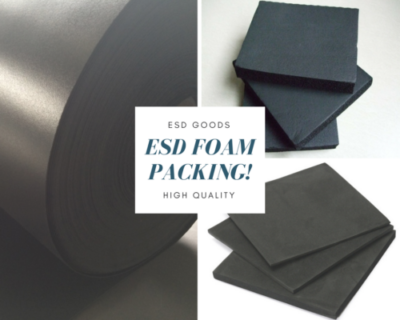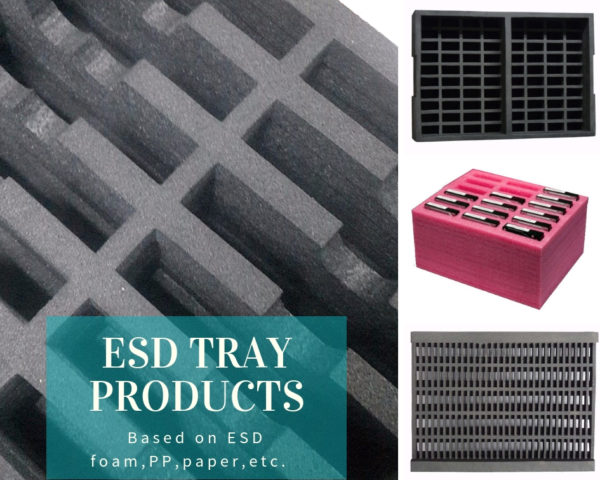Anti Static Foam Wholesale & Manufacture: Tips for Bulk Purchase & Quality Assurance
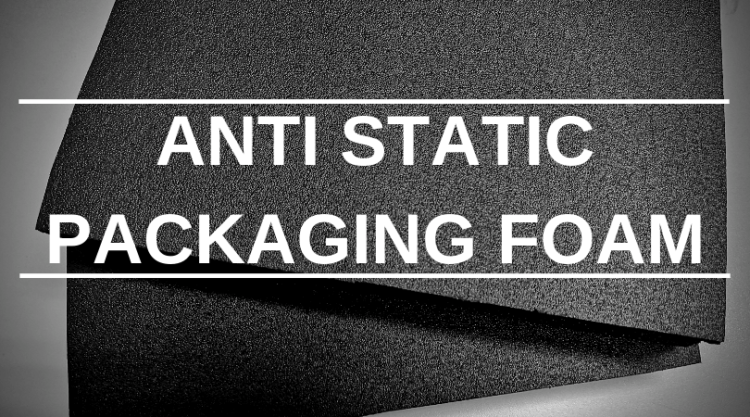
Are you in the market for anti-static foam? Look no further! In this article, we will unveil the secrets of anti-static foam manufacturing, providing you with valuable tips for anti static foam wholesale and bulk purchase and quality assurance. Whether you’re a business owner looking to protect sensitive electronic equipment during transportation or an individual looking for the perfect packaging solution for your valuable items, understanding the ins and outs of anti-static foam is vital.
From the importance of choosing the right materials to the production process and quality control measures, we will cover it all. Our expert insights will help you make informed decisions when purchasing anti static foam wholesale, ensuring you get the best value for your money. Additionally, we will provide you with tips to ensure quality assurance, so you can trust that the foam meets the required industry standards.
Stay tuned as we dive into the world of anti-static foam manufacturing, allowing you to purchase with confidence and protect your valuable assets effectively.
Understanding the importance of anti-static foam in various industries
Anti-static foam plays a crucial role in a wide range of industries. Its primary function is to prevent the buildup and discharge of static electricity, which can cause damage to electronic components and other sensitive materials. Industries such as electronics manufacturing, telecommunications, aerospace, and medical equipment heavily rely on anti-static foam to ensure the safe handling and transportation of their products.
The unique properties of anti-static foam make it an ideal choice for protecting sensitive equipment from electrostatic discharge (ESD) during shipping, storage, and assembly processes. By dissipating static charges, anti-static foam helps prevent costly damages and ensures the longevity of electronic devices. Its ability to absorb shock and vibrations further enhances its protective capabilities, making it a preferred choice for delicate items.
Moreover, anti-static foam is versatile and can be customized to fit various packaging needs. It can be cut into different shapes and sizes to accommodate specific products, providing a secure and snug fit. This flexibility makes it suitable for a wide range of applications, from protecting circuit boards and computer components to safeguarding delicate glassware and jewelry.
In summary, the importance of anti-static foam cannot be overstated. Its ability to prevent static electricity buildup, protect against shock and vibrations, and provide customized packaging solutions makes it an indispensable material in many industries.
Key considerations for anti-static foam wholesale
When purchasing anti-static foam in bulk, there are several key considerations to keep in mind to ensure you make the right choice for your specific needs.
Firstly, it’s essential to assess the level of protection required for your products. Different anti-static foams offer varying degrees of protection, so understanding your specific requirements will help you select the most suitable option. Factors such as the sensitivity of the items being packaged, the duration of storage or transportation, and the level of shock and vibration expected should all be taken into account.
Secondly, consider the durability and longevity of the foam. High-quality anti-static foam should be able to withstand repeated use without losing its protective properties. Ensure that the foam you choose is resistant to tearing, crushing, and general wear and tear to ensure the longevity of your packaging solution.
Thirdly, evaluate the foam’s conductivity properties. Anti-static foam should have a low surface resistance, typically measured in ohms per square. The lower the surface resistance, the better the foam’s ability to dissipate static charges. Verify that the foam you intend to purchase meets the required industry standards for conductivity.
By considering these key factors, you can make an informed decision when anti-static foam wholesaling in bulk, ensuring that you select the most suitable option for your specific needs.
Evaluating the quality of anti-static foam
Ensuring the quality of anti-static foam is crucial to its effectiveness in protecting your valuable assets. Here are some factors to consider when evaluating the quality of anti-static foam:
1. Surface Resistance: The surface resistance of anti-static foam determines its ability to dissipate static charges. Look for foam with low surface resistance, typically measured in ohms per square. A lower surface resistance indicates better conductivity and more effective protection against electrostatic discharge.
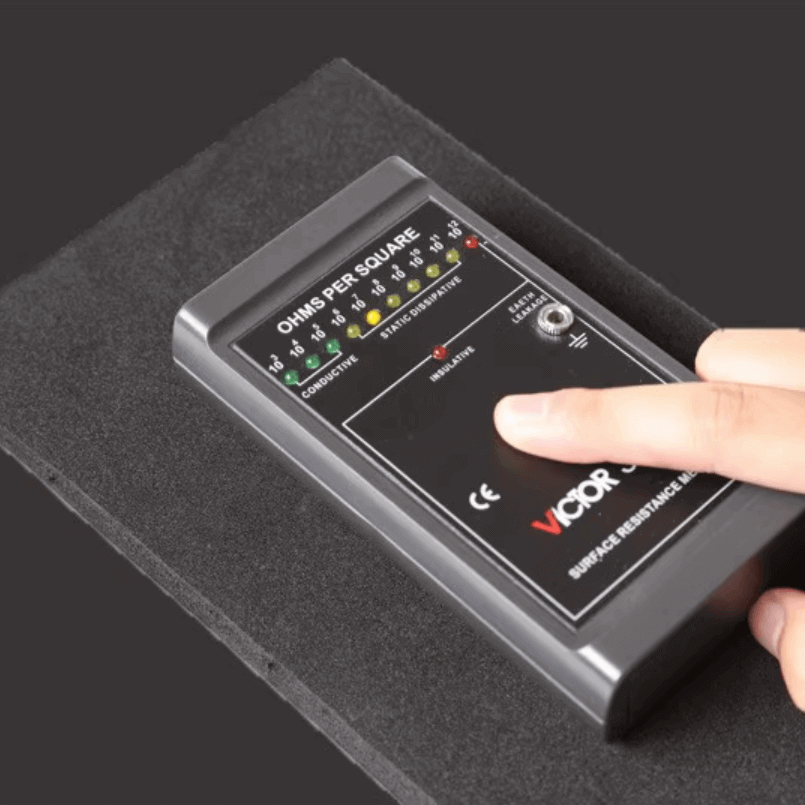
2. Density: The density of the foam affects its shock-absorbing capabilities. Higher-density foam provides better cushioning and protection against impact and vibrations during transportation. Consider the fragility of your products and select foam with an appropriate density to ensure maximum protection.
3. Tear Strength: Anti-static foam should have good tear strength to withstand handling and repeated use. Foam with high tear strength is less likely to rip or become damaged, ensuring its longevity and effectiveness as a packaging material.
4. Static Decay: The static decay rate measures how quickly the foam dissipates static charges. A fast static decay rate indicates efficient static dissipation, reducing the risk of damage to sensitive electronic components. Ensure that the foam you choose has a static decay rate that meets industry standards.
By carefully evaluating these quality factors, you can select anti-static foam that meets the required standards and provides optimal protection for your valuable assets.
Tips for selecting the right supplier for anti static foam wholesale
Choosing the right supplier for your bulk purchases of anti-static foam is essential to ensure you receive high-quality products and reliable service. Here are some tips to help you select the right supplier:
1. Industry Experience: Look for suppliers with a proven track record in the industry. An experienced supplier is more likely to have the knowledge and expertise to provide you with the right products and support.
2. Quality Assurance: Inquire about the supplier’s quality assurance processes. A reputable supplier should have strict quality control measures in place to ensure consistency and reliability in their products. Ask for certifications or test reports to validate the quality of their anti-static foam.
3. Customization Options: Consider whether the supplier offers customization options for their foam products. Being able to customize the foam to fit your specific packaging needs can enhance its effectiveness and provide a tailored solution for your products.
4. Competitive Pricing: While quality should be a top priority, it’s also essential to consider the supplier’s pricing. Compare quotes from different suppliers to ensure you are getting the best value for your money. However, be cautious of unusually low prices, as they may indicate compromised quality.
5. Customer Reviews and Testimonials: Research the supplier’s reputation by reading customer reviews and testimonials. Positive feedback from satisfied customers is a good indication of the supplier’s reliability and quality of service.
By following these tips, you can confidently select a supplier who can meet your anti static foam wholesale requirements and provide you with the necessary support and quality assurance.
Customization options for anti-static foam
One of the significant advantages of anti-static foam is its versatility and ability to be customized to fit specific packaging needs. Here are some customization options to consider when purchasing anti-static foam:
1. Die-Cutting: Die-cutting is a common customization option that allows foam to be cut into precise shapes and sizes. This is especially useful when packaging irregularly shaped items that require a snug and secure fit. Die-cut foam ensures maximum protection and minimizes movement during transportation.
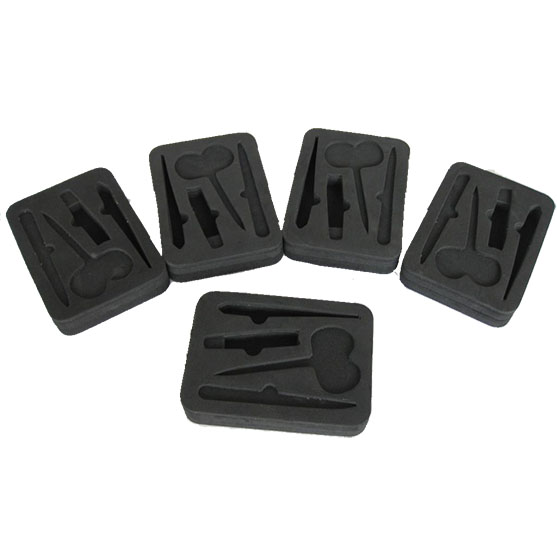
2. Lamination: Laminating anti-static foam with other materials can enhance its properties and functionality. For example, laminating foam with a conductive film can provide additional protection against static electricity. It can also improve the durability and tear resistance of the foam.
3. Printing and Branding: Some suppliers offer the option to print logos, labels, or branding information directly onto the foam. This customization option can help with product identification and branding, adding a professional touch to your packaging.
4. Multi-Layer Foam: For extra protection, consider using multi-layer foam. This involves combining layers of different foam types to achieve specific properties, such as increased shock absorption or better cushioning. Multi-layer foam can be tailored to meet specific requirements, providing optimal protection for delicate or fragile items.
When purchasing anti-static foam, discuss these customization options with your supplier to ensure that the foam is tailored to your specific packaging needs. Customization can greatly enhance the effectiveness of the foam and provide a more secure and reliable packaging solution.
Best practices for storing and handling anti-static foam
To maintain the effectiveness and integrity of anti-static foam, it’s important to follow best practices for storing and handling. Here are some guidelines to consider:
1. Storage Conditions: Store anti-static foam in a clean, dry, and temperature-controlled environment. Avoid exposure to direct sunlight, moisture, and extreme temperatures, as they can degrade the foam’s properties over time.
2. Proper Handling: When handling anti-static foam, ensure that clean gloves are worn to prevent contamination. Avoid touching the foam with bare hands, as oils and residues from the skin can reduce its conductivity.
3. Avoid Sharp Objects: Protect the foam from sharp objects that can puncture or damage it. Store the foam away from any tools or equipment that may cause accidental damage.
4. Regular Inspections: Regularly inspect the foam for signs of wear and tear, such as tears, cracks, or degradation. Replace damaged foam promptly to maintain its protective properties.
By following these best practices, you can prolong the lifespan of your anti-static foam and ensure its effectiveness in providing reliable protection for your valuable assets.
Common challenges in anti-static foam manufacturing and how to overcome them
The manufacturing of anti-static foam comes with its own set of challenges. Here are some common challenges and how they can be overcome:
1. Consistency in Conductivity: Achieving consistent conductivity properties across large batches of foam can be challenging. This can be overcome by implementing strict quality control measures and conducting regular testing to ensure that each batch meets the required standards.
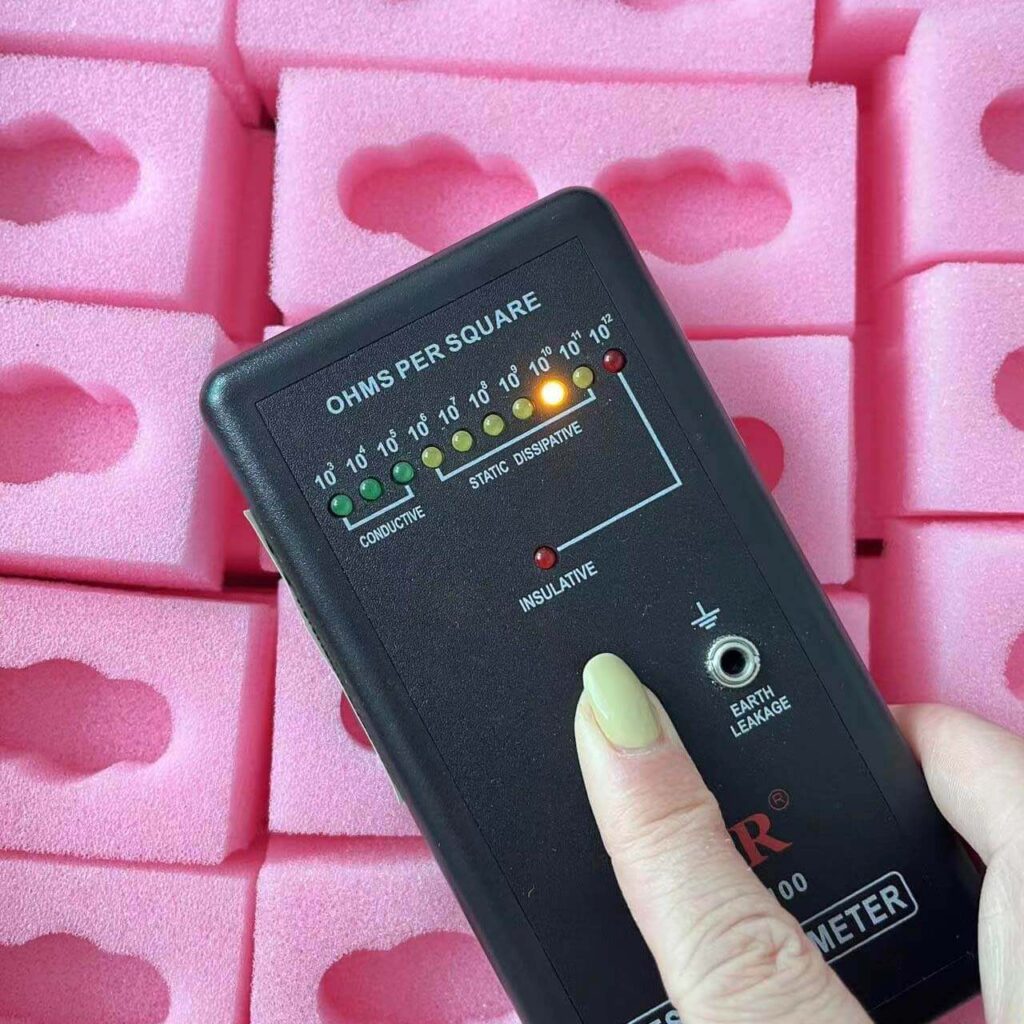
2. Environmental Impact: Foam manufacturing can have a significant environmental impact due to the use of chemicals and energy-intensive processes. To mitigate this, manufacturers can adopt eco-friendly practices, such as using recycled materials and implementing energy-efficient manufacturing techniques.
3. Customization Complexity: Customizing anti-static foam to meet specific requirements can be complex and time-consuming. Manufacturers can overcome this challenge by investing in advanced die-cutting and lamination technologies, allowing for faster and more precise customization.
4. Cost Efficiency: Balancing cost efficiency with quality can be a challenge in foam manufacturing. Manufacturers can optimize production processes, streamline operations, and source materials strategically to achieve cost savings without compromising on quality.
By addressing these challenges head-on, manufacturers can ensure the production of high-quality anti-static foam that meets industry standards and exceeds customer expectations.
Case studies: Successful applications of anti-static foam in different industries
Successful applications of anti-static foam in different industries
To further illustrate the effectiveness and versatility of anti-static foam, let’s explore some case studies of its successful applications in different industries:
1. Electronics Manufacturing: A leading electronics manufacturer implemented anti-static foam as part of their packaging solution for delicate electronic components. The foam’s ability to dissipate static charges and provide cushioning protection reduced the risk of electrostatic discharge during transportation, resulting in improved product quality and customer satisfaction.
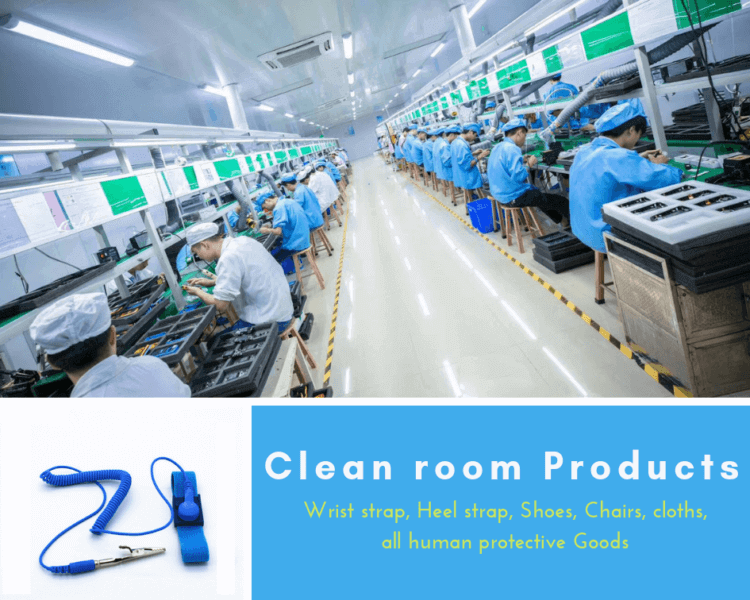
2. Telecommunications: A telecommunications company utilized anti-static foam to package their sensitive communication devices. The foam’s customizable nature allowed for precise fitting, ensuring a secure and snug packaging solution. This minimized movement and provided optimal protection against shock and vibrations during shipping, reducing product damage and increasing customer confidence.
3. Aerospace: An aerospace manufacturer integrated anti-static foam into their assembly process to safeguard their precision parts and components. The foam’s static dissipative properties prevented electrostatic discharge, preventing potential damage to critical aerospace equipment. The foam’s durability and shock-absorbing capabilities ensured safe handling and transportation, resulting in cost savings and improved operational efficiency.
4. Medical Equipment: A medical equipment supplier utilized anti-static foam to protect their fragile medical devices during storage and transportation. The foam’s ability to absorb shock and vibrations minimized the risk of damage, ensuring that the equipment arrived in pristine condition. This enhanced the supplier’s reputation for delivering high-quality products and improved customer satisfaction.
These case studies demonstrate the practical applications and tangible benefits of using anti-static foam in various industries. By leveraging its protective properties, companies can enhance the safety and reliability of their products, ultimately driving customer satisfaction and business success.
Conclusion: Harnessing the power of anti-static foam for your business
In conclusion, anti-static foam is a vital component in protecting sensitive electronic equipment and valuable assets. Understanding the secrets of anti-static foam manufacturing is crucial when making bulk purchases and ensuring quality assurance.
By considering the key factors for anti static foam wholesale and bulk purchase, evaluating foam quality, selecting the right supplier, customizing the foam to fit specific needs, and following best practices for storage and handling, you can harness the power of anti-static foam to safeguard your valuable assets effectively.
With its ability to dissipate static charges, provide cushioning protection, and offer customization options, anti-static foam is a versatile and indispensable material in various industries. It plays a vital role in ensuring the safe transportation, storage, and assembly of delicate and sensitive items.
So, whether you’re an electronics manufacturer, a telecommunications company, an aerospace manufacturer, or a medical equipment supplier, incorporating anti-static foam into your packaging solutions can provide peace of mind, protect your valuable assets, and enhance your overall business operations.
Now armed with the knowledge and insights shared in this article, you can confidently navigate the world of anti-static foam manufacturing, make informed purchasing decisions, and unlock the full potential of this remarkable material for your business.

